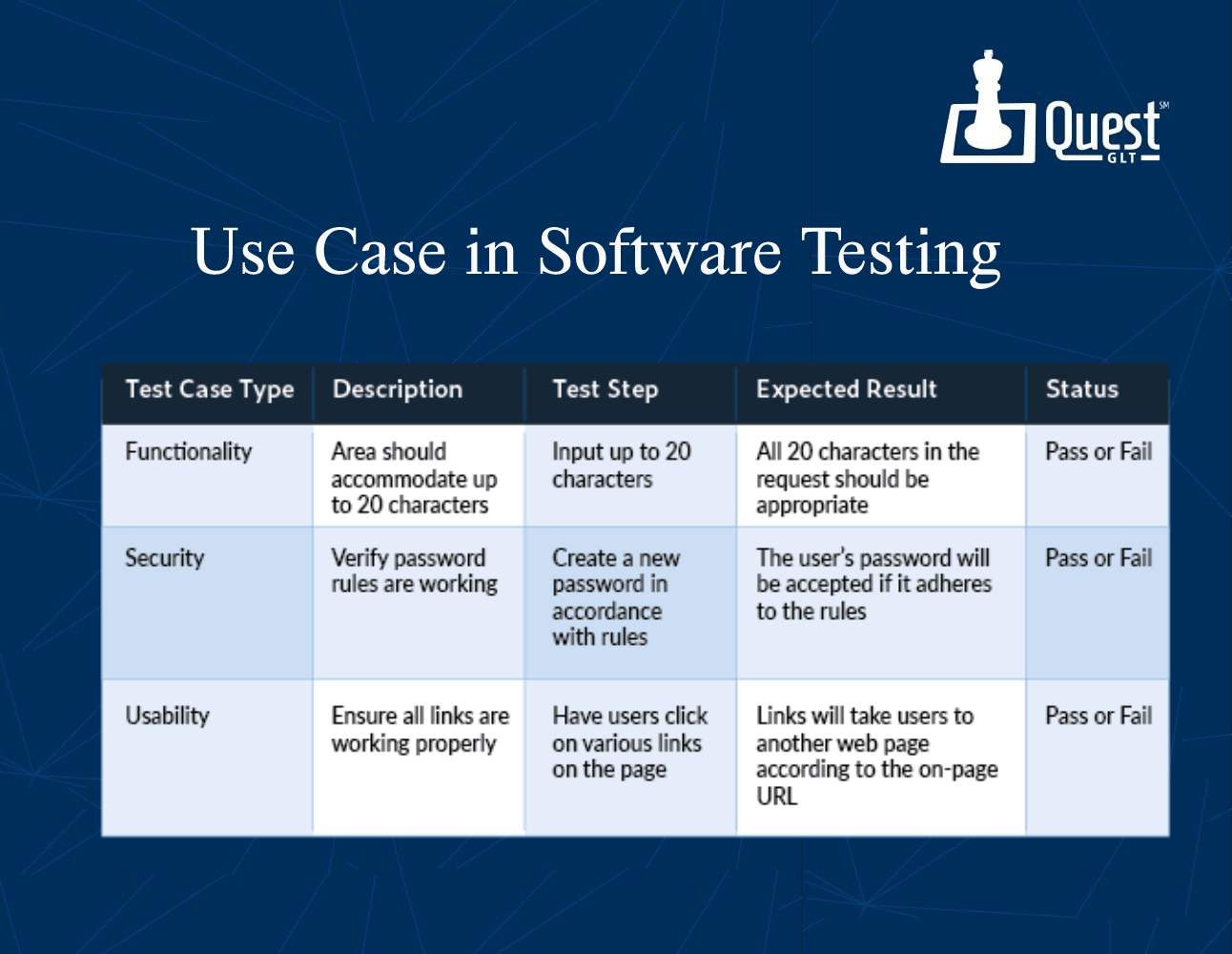
In software testing, the Use Case includes the actions of a user and the response of the system toward the user's actions. In a precise manner, you can understand the Use Case as an interaction between the system and the user. In software testing the Use Case is considered an integral part of it as use case testing covers the gaps in the entire system and lessens the chances of missing an essential loop during individual software testing.
When you talk about the testing coverage under the Use Case testing criteria, it starts from scratch and finishes the maximum testing of the software.
The use case testing is utilized by the Software developers, testers and stakeholders in fetching the gaps between the software applications that were unidentified by the usual software testing tools.
What are the prime uses of Use Case testing documents?
-
The use case documents help the developers in designing the code for testing.
- These documents also help the software testers in creating the test cases.
- To understand the demands of a software platform, the business stakeholders take help from Use Case documents.
What are the main elements of the Use Case in Software Testing?
To understand the complex working of a Use Case in software testing, it is mandatory to know the key elements of a Use Case.
1. Actor - This element of the Use Case includes the individual or an entire team of workers who interact with the system.
2. System - This is the product /software or a service that is utilized by the actors or users as a system under testing.
3. Goal - The desired outcome for the user is known as the Goal in Use Case.
4. Stakeholders - The group of workers or actors that can be affected by the outcome of the project are called the stakeholders in the Use Case.
5. Primary Actor - In the group of stakeholders the first person who initiates the process of achieving the goal of the project is called the primary actor of the Use Case.
6. Preconditions - Before running a specific test, the state of the system and its environment is called the preconditions.
7. Triggers - While the beginning of the Use Case the events that take place are called the triggers.
8. Basic flow of success scenario - A quite useful element of the Use Case is the basic flow which ensures the users or stakeholders that nothing will go wrong if you follow this basic flow for the Use Case testing.
How can you create a Use Case in the best possible manner?
As it is widely known that creating a Use Case is a complex process for software testing. But the below-given points can make you able to easily understand the creation process of the Use Case. Take a look at all the steps as each step exhibits an action for the Use Case.
- A better understanding of the creation process and keeping it free from complexities require a number of Use Cases between five and ten.
- When you initiate any statement with the preposition "if" it amplifies the complexities of the use case. It will be better for you to choose prepositions like " verify or validate". For example - The system verifies that the login is valid.
- The steps of the use case should be very simple, short and easy to understand for the actors as well as the system.
- Including UI in the use case can infuse the updating and changements hence you should avoid including it into the use case. The UI is prone to change in an agile framework.
- The created use case must depict the higher representation of the system and should avoid the inclusion of all the minor elements of the system.
- Involving the design of the system in the use case is not necessary at all but you must add the explanation of all the functional parts of the system.
These points can help you in creating a use case with the least or no inclusion of the complexities. For a more easy way to create a Use Case, you can take help from a professional testing team.
Which advantages lure the developers or software testers towards the utilization of the Use Case?
When a team of actors creates a Use Case it benefits the team of stakeholders in several ways. Here are some of the most beneficial traits of the Use Case are given below.
- The use case diagram is quite beneficial in depicting the requirements of the system and representing them in a more functional frame. The Use Case diagrams are the best portrayal of the functional requirement documentation technique.
- As it takes the information from the end user's point of view, it ensures that you have taken the right way for developing the required system and achieve your project goal.
- The Use Case diagram is beneficial in modeling the basic flow of the events.
- The use case is adept at splitting large and complex applications into several small modules and helps us in visualizing the software design at a high level.
- It helps in including the core functionalities of the system by capturing them.
- The use case is available in a very usual and nontechnical language so that the stakeholders, customers, testers and developers can use it by easily understanding the elements of the Use Case.
- One can easily understand the real system needs in the designing process as the use case focuses on the users of the system instead of focusing on the system.
- The use case can become a base for the test case creation.
Wrap Up
This end-to-end testing service sometimes does not ensure the entire coverage of the user application. It starts with a very simple view that shows the system is built first and foremost for the users. This focuses on a specific usage at a time hence it is a testing format with the least complexities.













